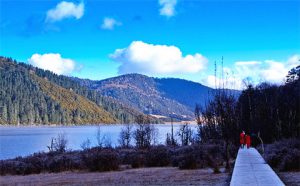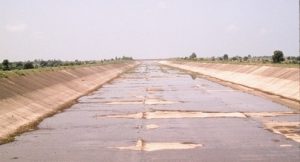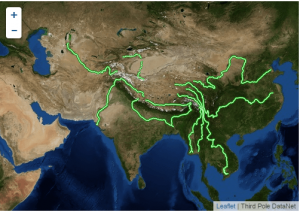One highlight of my childhood growing up in California was a family vacation to Yosemite National Park. For the first time in my life, I was awed by the splendour of nature. In that magnificent setting – with its wildlife and vast open spaces – I remember learning that national parks existed because the US government had agreed to protect them for future generations.
Since then, as a conservation biologist and wildlife professional, I have been fortunate to visit dozens of national parks around the world. In so many cases, these places are sources of both natural splendour and tremendous pride to the countries that have established them.
The world conservation community comes together November 12th-19th in Sydney, Australia for the once-in-a-decade World Parks Congress, convened by IUCN (International Union for Conservation of Nature). My Wildlife Conservation Society colleagues and I will join thousands of delegates from around the world representing governments, conservation organisations, academia and the business community.
The gathering finds us at a crossroads. A landmark paper published this week in Nature by James Watson and colleagues shows that there is now significant evidence that many governments are backsliding on their commitments to establish and support parks and other protected areas.
While the area of land and ocean protected by law has increased since the last World Parks Congress in 2002, parks are under siege. Governments have cut funding and reduced staff. More and more parks are being opened up to commercial extractive industries like logging, energy development and extraction, and mining. And all too many parks are poorly managed or exist on paper only.
This Congress presents the world community with a critical decision: to continue down the path of squandering our precious wildlife and natural resources, or to re-commit ourselves to the establishment and responsible management of parks across the globe.
Many parks – particularly in some developing countries with poor leadership, low political will and corruption – have been ransacked by commercial poachers and wildlife traffickers. Parks in Africa and Asia have lost significant wildlife, with more than half of all large mammals lost from African parks alone.
Of course, all is not bleak, and many governments are trying their best, even with limited resources, to turn the tide and protect the wildlife in their parks. But it is an uphill battle. Our species is continuing to transform our planet at a devastatingly rapid rate, with the elimination of wild animals and plants in the process and significant harm to local human populations that depend on healthy ecosystems.
As we continue our relentless destruction of our natural world, it is critical that we protect the most intact, well-functioning ecosystems that remain, from the Arctic, to the tropical forests, to the deep sea. Today, parks cover only 13% of the land on Earth and 3% of the world’s oceans; much more is needed.
When well-managed, parks help wildlife to persist at ecologically functional densities, not only saving iconic species but preserving ecosystem function and services. Billions of people receive fresh water directly due to the natural filtering function that intact forests provide. It is critical to maximise these and other benefits protected areas give us – from tourism and employment opportunities to payments for reduced deforestation.
In developing countries especially, parks and their wildlife will only survive if private and public assistance increases significantly. The Nature paper pointed out that the annual cost of adequately managing an expanded network of terrestrial and marine parks would cost from US$45-75 billion dollars – about 2.5% of global military expenditures.
Governments and industry must allocate new funding to parks, but the responsibility is not theirs alone. Partnerships must be forged with civil society and local communities to ensure sufficient funding, facilitate implementation and establish sound, transparent and honest management practices.
As the world gathers this week in Sydney, my colleagues and I will be stressing the power of parks to protect the "best of the wild" – those remaining intact landscapes and seascapes that have the greatest chance of preserving species and natural ecosystems in the face of global change and a human population that will exceed 8 billion within a decade.
In a decade’s time, I hope we can look back and see large increases in well-managed and well-resourced parks on land and sea, with increases in healthy wildlife populations and intact, well-functioning ecosystems. The priorities we set and the decisions we make today will impact both nature and human welfare long into the future. Indeed, our fate and the fate of the earth are, more than ever before, inseparable.
This article was first published on the Huffington Post







